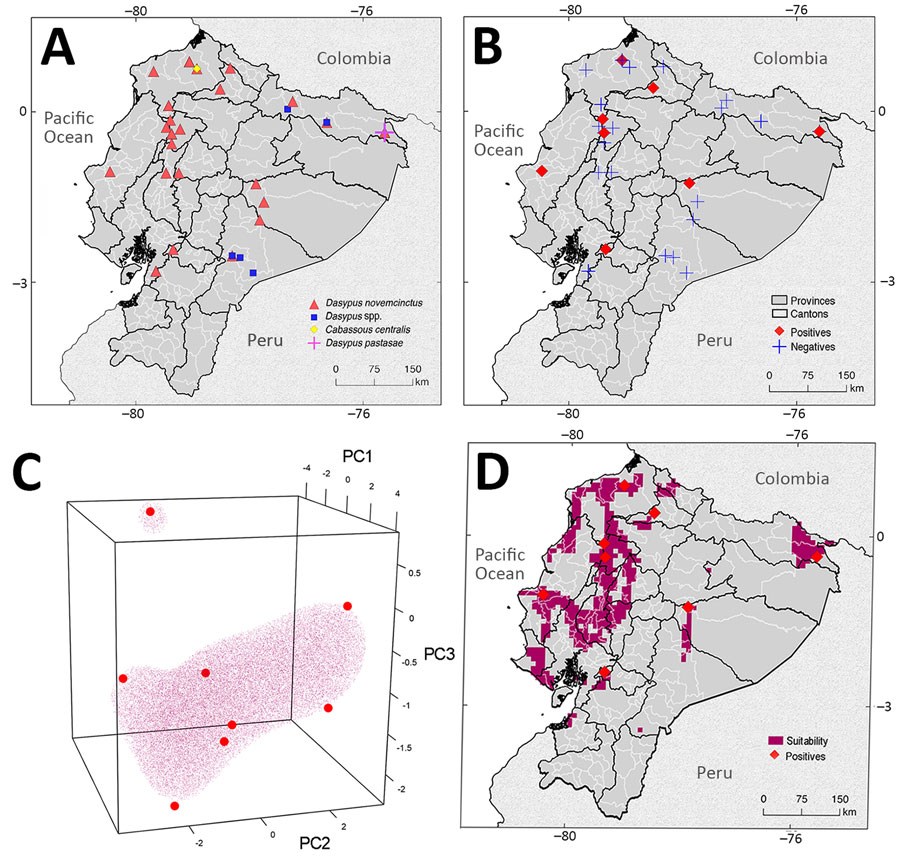Mycobacterium leprae in Nine-Banded Armadillos (Dasypus novemcinctus), Ecuador
Daniel Romero-Alvarez

, Manuel Calvopiña, Emily Cisneros-Vásquez, Daniel Garzon-Chavez, Alaine K. Warren, Lauren S. Bennett, Ritika R. Janapati, Carlos Bastidas-Caldes, Melanie Cabezas-Moreno, Jacobus H. de Waard, Daniela Silva-Martinod, Roxane Schaub, Mary Jackson, A. Townsend Peterson, and Charlotte Avanzi
Author affiliation: Universidad Internacional SEK, Quito, Ecuador (D. Romero-Alvarez); University of Kansas, Lawrence, Kansas, USA (D. Romero-Alvarez, A.T. Peterson); Universidad de las Américas, Quito (M. Calvopiña, E. Cisneros-Vásquez, C. Bastidas-Caldes, J.H. de Waard, D. Silva-Martinod); Universidad San Francisco de Quito, Quito (D. Garzon-Chavez); Colorado State University, Fort Collins, Colorado, USA (A.K. Warren, L.S. Bennett, R.R. Janapati, M. Jackson, C. Avanzi); Agrocalidad, Quito (M. Cabezas-Moreno); Centre Hospitalier de Cayenne, Cayenne, French Guiana (R. Schaub)
Main Article
Figure

Figure. Locations of and geographic range Mycobacterium leprae detections in a study of M. leprae in nine-banded armadillos (Dasypus novemcinctus), Ecuador. A) Locations of armadillo collections and species identified. B) Locations from which M. leprae–positive armadillos samples collected. In southern Santo Domingo de los Tsáchilas, >1 armadillo was collected (Appendix 2). No samples were positive for M. lepromatosis. C, D) Vector machine hypervolume and its projected geography. C) One-class support vector machine hypervolume with enclosed regions of environmental similarity to areas with M. leprae detections (red points); D) map with projected geography for M. leprae detections. Latitude and longitude are shown at edges. Mapping developed with the information available in Appendix 2. PC, principal component (see Appendix 1).
Main Article
Page created: August 22, 2024
Page updated: November 26, 2024
Page reviewed: November 26, 2024
The conclusions, findings, and opinions expressed by authors contributing to this journal do not necessarily reflect the official position of the U.S. Department of Health and Human Services, the Public Health Service, the Centers for Disease Control and Prevention, or the authors' affiliated institutions. Use of trade names is for identification only and does not imply endorsement by any of the groups named above.
